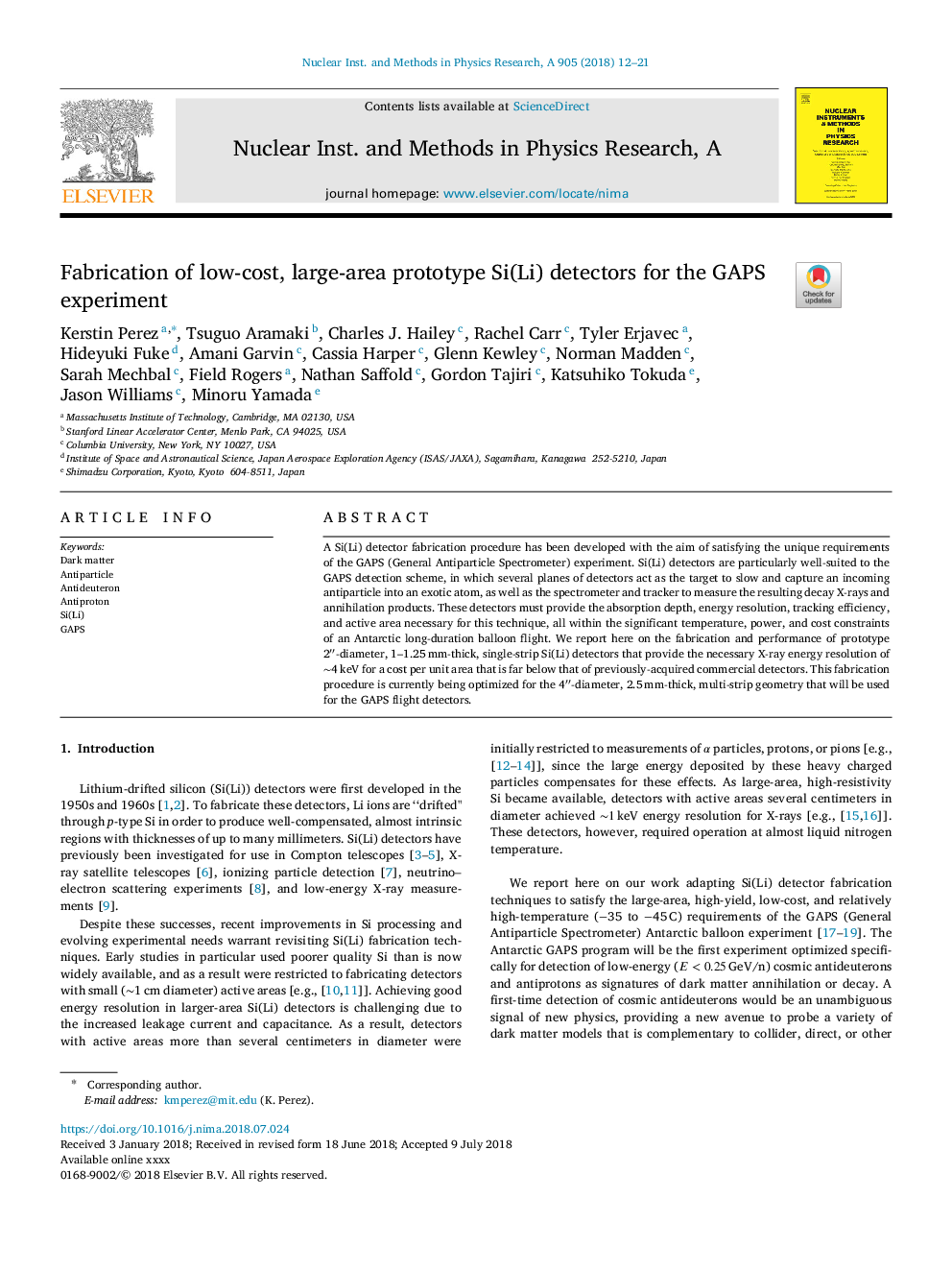| Article ID | Journal | Published Year | Pages | File Type |
|---|---|---|---|---|
| 8165880 | Nuclear Instruments and Methods in Physics Research Section A: Accelerators, Spectrometers, Detectors and Associated Equipment | 2018 | 10 Pages |
Abstract
A Si(Li) detector fabrication procedure has been developed with the aim of satisfying the unique requirements of the GAPS (General Antiparticle Spectrometer) experiment. Si(Li) detectors are particularly well-suited to the GAPS detection scheme, in which several planes of detectors act as the target to slow and capture an incoming antiparticle into an exotic atom, as well as the spectrometer and tracker to measure the resulting decay X-rays and annihilation products. These detectors must provide the absorption depth, energy resolution, tracking efficiency, and active area necessary for this technique, all within the significant temperature, power, and cost constraints of an Antarctic long-duration balloon flight. We report here on the fabrication and performance of prototype 2â²â²-diameter, 1-1.25 mm-thick, single-strip Si(Li) detectors that provide the necessary X-ray energy resolution of â¼4 keV for a cost per unit area that is far below that of previously-acquired commercial detectors. This fabrication procedure is currently being optimized for the 4â²â²-diameter, 2.5 mm-thick, multi-strip geometry that will be used for the GAPS flight detectors.
Related Topics
Physical Sciences and Engineering
Physics and Astronomy
Instrumentation
Authors
Kerstin Perez, Tsuguo Aramaki, Charles J. Hailey, Rachel Carr, Tyler Erjavec, Hideyuki Fuke, Amani Garvin, Cassia Harper, Glenn Kewley, Norman Madden, Sarah Mechbal, Field Rogers, Nathan Saffold, Gordon Tajiri, Katsuhiko Tokuda, Jason Williams,
